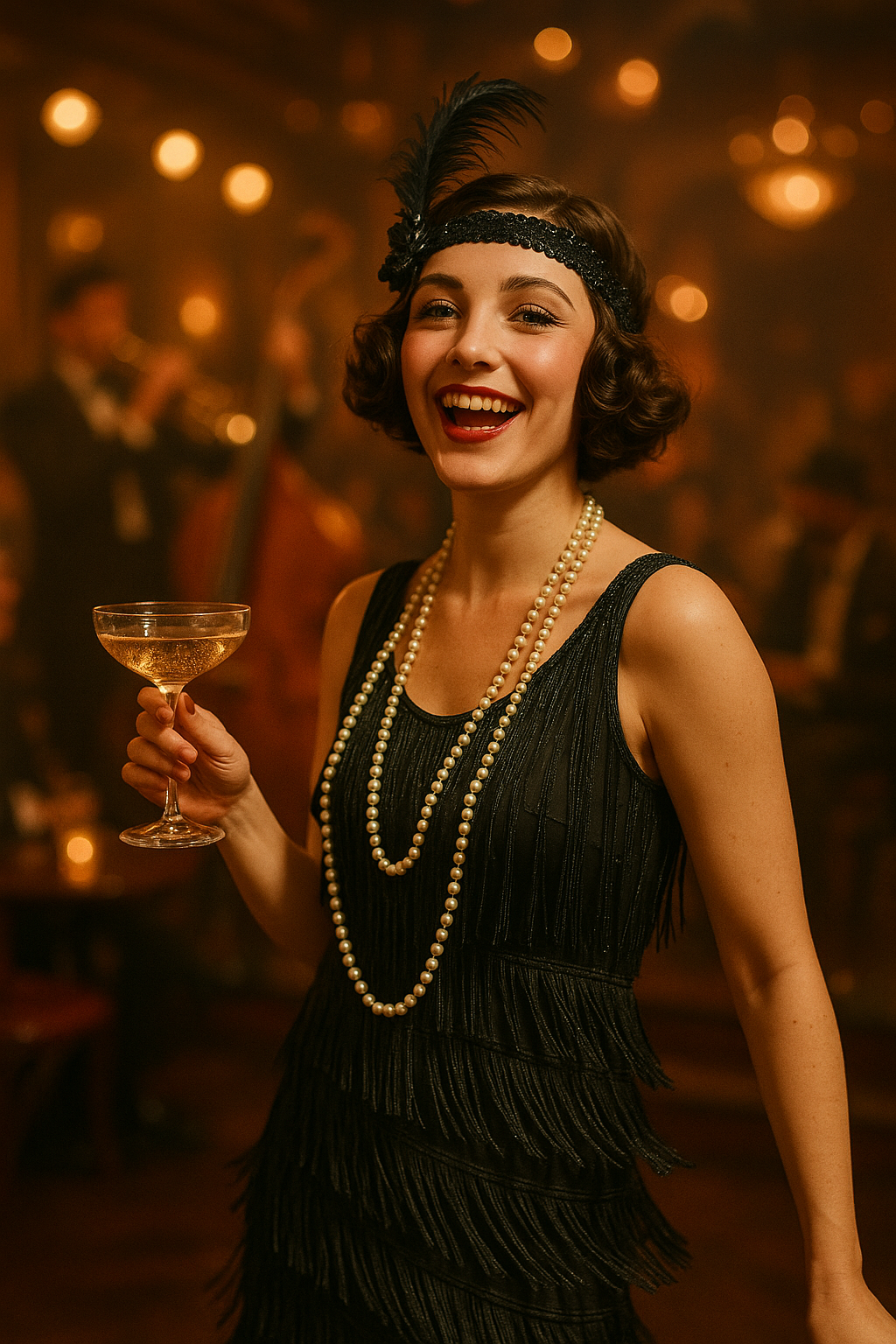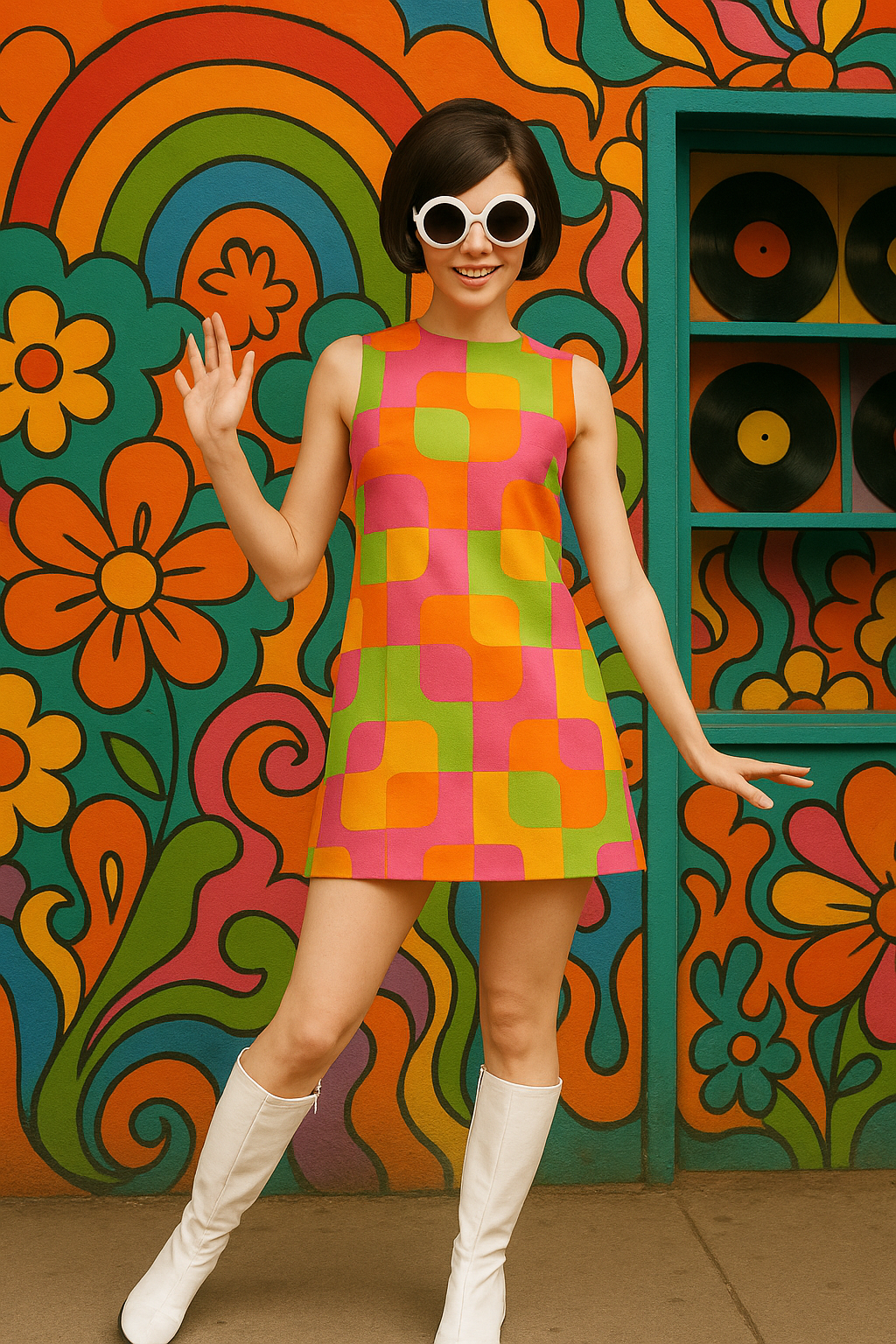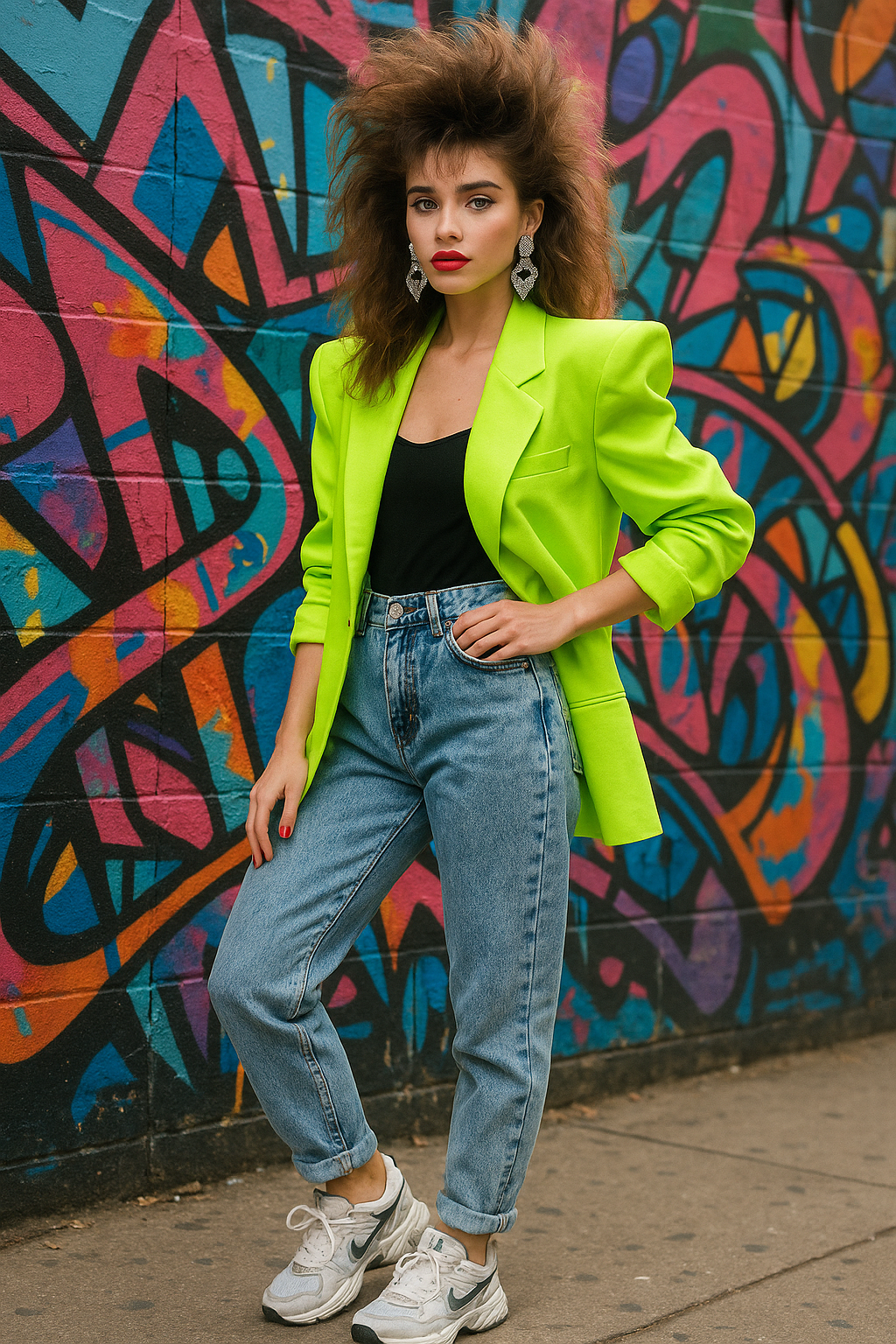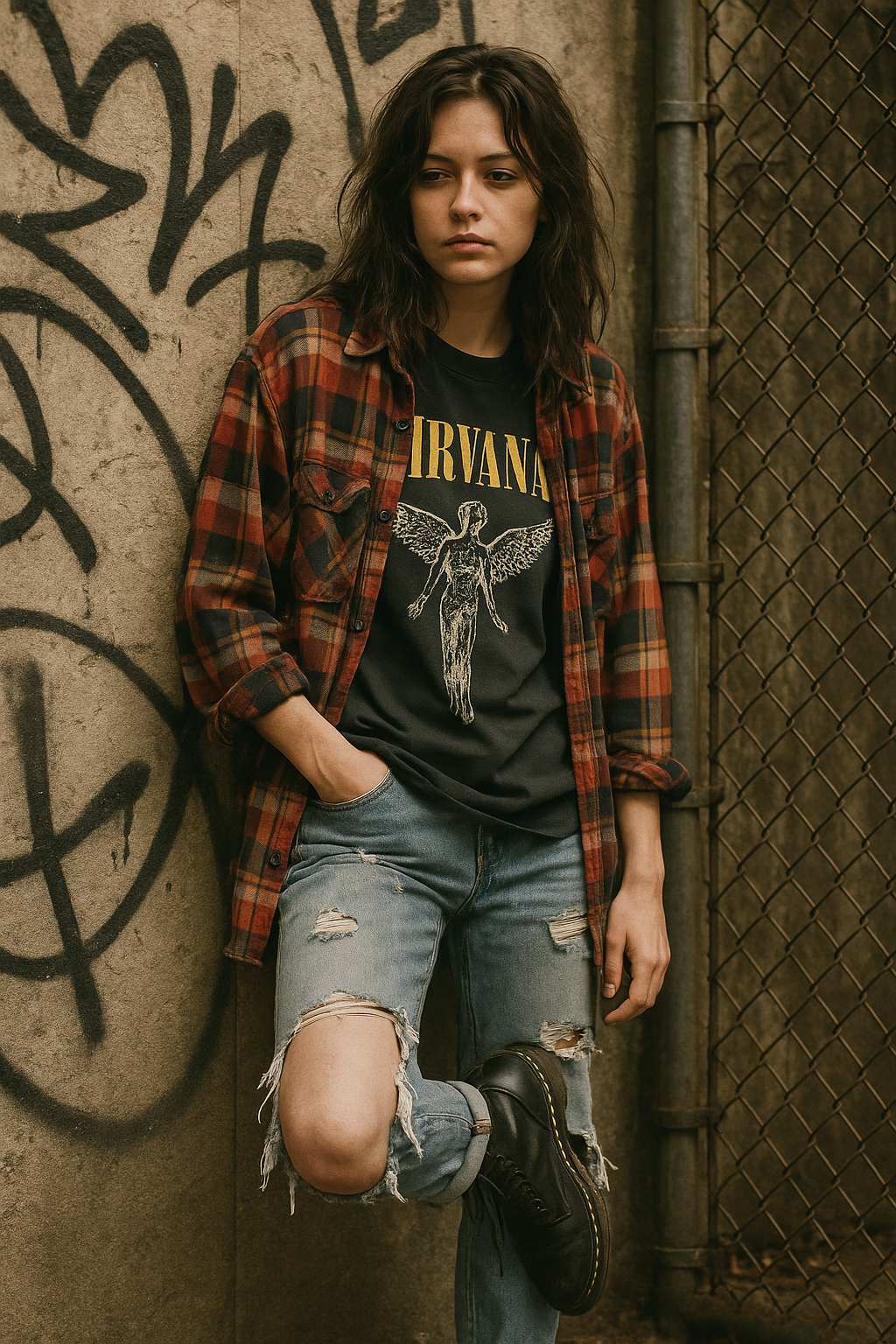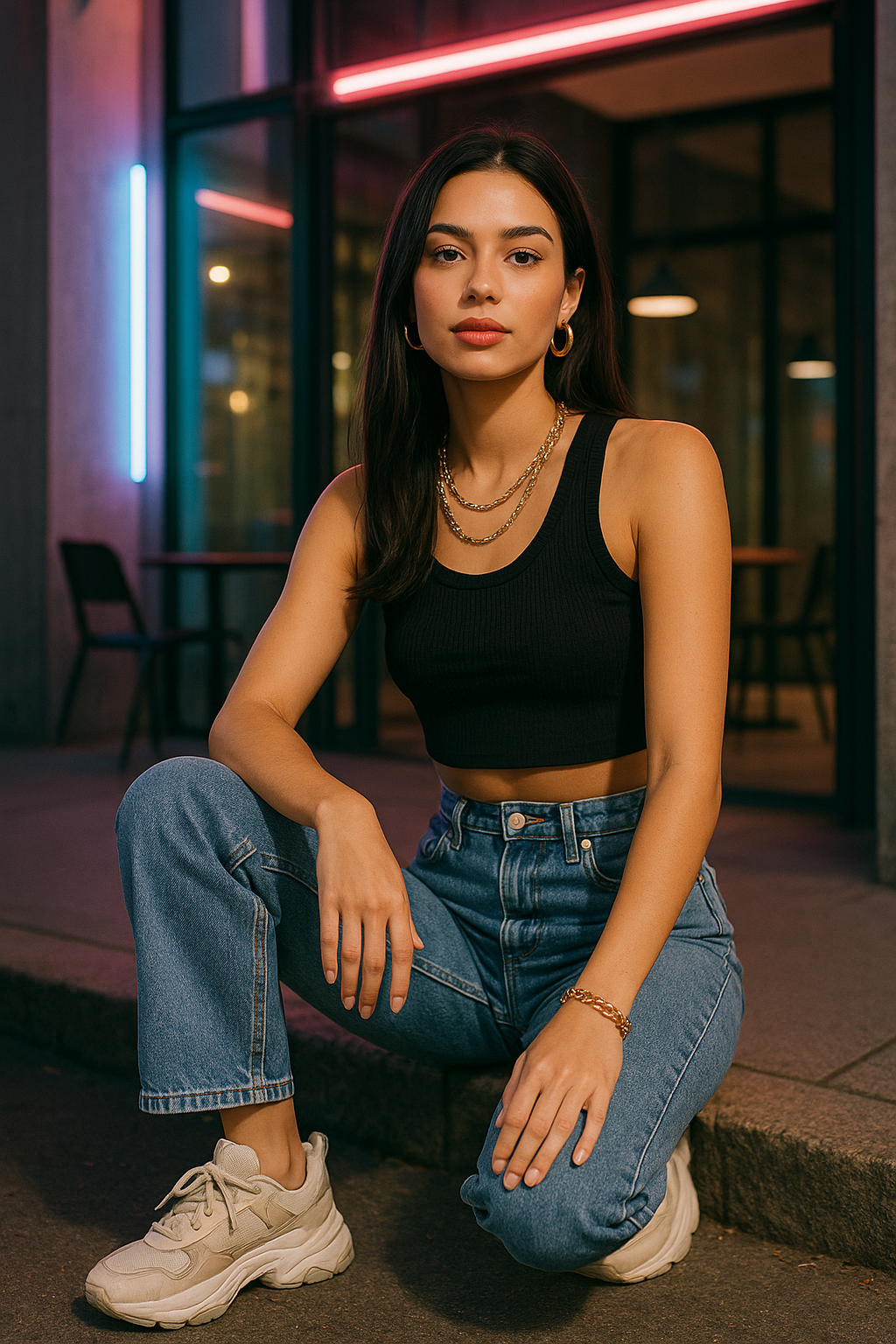A Journey Through Fashion History: From Corsets to Crop Tops
Fashion is more than just fabric — it’s a deeply woven reflection of who we are, what we value, and the myriad cultural forces that shape our everyday lives.
As we step back in time, we can explore how fashion has evolved dramatically, transitioning from the rigid elegance of Victorian corsets to today’s effortlessly chic streetwear.
Let’s embark on a captivating journey through the decades, where every hemline and silhouette reveals a rich narrative, telling a story that connects us to our past while influencing our present style choices.
Victorian Era (1800s):
The Art of Constriction and Elegance
In the 19th century, fashion emerged as a distinct mark of status and femininity within society.
Women’s silhouettes during this era were characterized by an emphasis on both drama and discipline — the tiny waist, meticulously achieved through the rigorous practices of corsetry and tight lacing, quickly became the prevailing standard of beauty.
Crinolines and expansive hoop skirts widened skirts to enormous, sometimes cumbersome dimensions, making it notably challenging to navigate through doorways yet ensuring an undeniably striking presence wherever women would go. Fashion was also inextricably linked to notions of social class during this time.
Luxurious fabrics like silk and plush velvet, along with intricate embroidery and delicate lace details, served to signal both wealth and refinement to onlookers.
Notably, Queen Victoria’s considerable influence even popularized the wearing of white for weddings, a timeless tradition that remains remarkably strong and cherished to this very day.
Style Insight:
This era’s obsession with structure laid the groundwork for the fashion industry’s long love affair with the “ideal” body shape — an idea that would be challenged (and reimagined) throughout the 20th century.
The Roaring Twenties:
Flappers, Jazz, and Rebellion
With the conclusion of World War I, the entire world — along with women’s fashion — embraced a sense of newfound freedom and opportunity.
Flapper dresses featuring dropped waists, shimmering beaded fringe, and exquisite art deco embellishments celebrated both movement and the vibrant nightlife that characterized this transformative period.
Women boldly cut their hair into daring bobs and adorned their lips with striking red lipstick, symbolizing a spirited rebellion against the restrictive clothing and traditional gender norms of the past.
Jazz music, hidden speakeasies, and a profound thirst for personal liberation defined the lively atmosphere of the era. Influential designers like Coco Chanel brought revolutionary changes to fashion with their relaxed, sporty styles, while Jeanne Lanvin embraced luxury through the creation of romantic, elegantly draped dresses.
Did You Know?
The 1920s also saw the rise of ready-to-wear fashion, making stylish clothing more accessible than ever before.
The 1950s:
The Hourglass Returns
Post-World War II optimism brought a return to femininity and glamour. Christian Dior’s “New Look,” introduced in 1947, dominated the decade with its nipped-in waists, full skirts, and voluminous petticoats. It was a reaction against wartime austerity, celebrating abundance and luxury.
Women embraced tailored suits, kitten heels, and accessories like gloves and hats that completed every outfit. Hollywood stars like Marilyn Monroe, Audrey Hepburn, and Grace Kelly became global style icons, influencing millions.
Style Insight:
The 1950s also marked the rise of youth culture, as teenagers began to shape trends rather than simply following their parents’ styles.
The 1960s:
Youthquake, Mini Skirts, and Mod Fashion
The 1960s were a revolution in style — a time when fashion finally broke free from the conservative silhouettes of the past and embraced a playful, rebellious spirit that mirrored the social revolutions happening around the world.
Youth culture drove fashion trends like never before. Influential icons like Twiggy, Jean Shrimpton, and The Beatlesdefined the “youthquake” movement — a cultural shift that placed young people at the center of style and influence.
Mini skirts and shift dresses emerged as iconic elements of the 1960s fashion scene, embodying liberation and youthful exuberance. The mini skirt, originally popularized by designer Mary Quant, became a symbol of freedom, often styled with go-go boots and colorful tights that added a playful touch to any outfit.
The Mod fashion movement complemented this with its distinctive geometric prints, monochrome palettes, and sleek A-line dresses. Characterized by clean lines and bold colors, the Mod style signified a sense of futuristic optimism that resonated with the era's cultural shifts.
As the decade progressed, psychedelic prints became increasingly popular, influenced by the rise of counterculture and the vibrant atmosphere of music festivals, encapsulating the spirit of the Summer of Love with their swirling patterns and bold hues.
Accessories played a crucial role in completing these looks, with oversized sunglasses, headscarves, statement earrings, and chunky bangles becoming essential finishing touches that enhanced the individualistic style of the time.
Designer Spotlight:
Mary Quant’s mini skirts changed the face of fashion, while André Courrèges introduced space-age designs with white boots and metallic fabrics, foreshadowing the era’s fascination with the future.
Style Insight:
The 60s taught us that fashion could be a form of protest and self-expression, not just a reflection of class or gender roles. It was a decade when style — like society — was in flux, and the boundaries of what was acceptable were constantly being redrawn.
The 1970s:
Freedom, Expression, and Disco Fever
The 1970s were a fashion playground for self-expression. Influenced by the hippie movement, styles like bell-bottoms, peasant blouses, and denim everything ruled the streets. Earth tones, ethnic prints, and handmade crafts reflected a growing interest in individuality and global influences.
Meanwhile, the disco era brought sequins, wrap dresses, and jumpsuits that shimmered under the disco ball. Designers like Diane von Fürstenberg made her iconic wrap dress a staple in every woman’s wardrobe.
Cultural Note:
Music icons like David Bowie and Cher blurred gender lines and embraced flamboyant costumes, proving that fashion could be as bold as your imagination.
Style Tip:
Embrace 70s boho vibes with a flowy maxi dress, fringe vest, and platform sandals.
The 1980s:
Power Dressing, Neon Lights, and Pop Culture
The 1980s were a decade of bold choices — fashion was big, bright, and unapologetically excessive. The era embraced power dressing, a style that reflected women’s growing presence in the corporate world. Shoulder pads, oversized blazers, and pencil skirts created a commanding silhouette that exuded confidence and authority.
At the same time, the music and pop culture scene influenced street style in unforgettable ways. Icons like Madonna, Michael Jackson, and Prince pushed boundaries with their fearless looks. Think lace gloves, mesh tops, and punk-inspired accessories that screamed individuality and rebellion.
On the streets, neon colors, graphic prints, and denim everything defined everyday wear. Acid-wash jeans, leg warmers, and scrunchies became must-haves for every teen. The fitness craze also made its mark — leotards, leggings, and sweatbands turned gym clothes into streetwear.
Designer Spotlight:
Brands like Versace, Thierry Mugler, and Vivienne Westwood dominated high fashion, embracing both glamour and experimental design. Jean-Paul Gaultier blurred gender lines with androgynous collections, laying the groundwork for today’s inclusive fashion landscape.
Style Insight:
The 80s taught us that fashion could be fun, fierce, and a powerful tool for self-expression — a reminder that even the most daring trends can come back in new forms.
The 1990s:
Minimalism Meets Grunge
The 90s were undeniably a vibrant mix of rebellion and simplicity that captivated a generation.
Grunge fashion, heavily inspired by Seattle’s influential music scene (hello, Nirvana!), introduced a distinctive style marked by oversized flannel shirts, distressed ripped jeans, and the ever-iconic Doc Martens, all of which dominated the wardrobes of many.
This bold anti-fashion aesthetic fervently rejected polished and pristine looks, instead choosing to embrace a raw authenticity that resonated with youth culture at the time.
Meanwhile, minimalism quietly took hold on the runways, showcasing designs that featured Calvin Klein’s stunning slip dresses, a palette of soothing neutrals, and clean, structured lines — all of which served as a direct reaction to the extravagant excesses of the 80s.
Supermodels like Kate Moss perfectly embodied the “heroin chic” look, which became synonymous with the visually arresting editorial pages of the era, leaving a lasting mark on fashion history.
Style Insight:
90s fashion was about individuality — whether you were a grunge rebel or a minimalist maven, your style expressed your identity.
2000s to Today:
Y2K, Normcore, and Digital Influences
The turn of the millennium brought an exciting array of futuristic vibes: metallic fabrics, low-rise jeans, and bedazzled everything ranging from accessories to clothing pieces. Remember the iconic butterfly clips and those tiny shoulder bags that were a staple of the era? Paris Hilton and Britney Spears ruled the fashion scene as the unmistakable Y2K style queens, inspiring countless trends.
By the 2010s, the meteoric rise of social media transformed everything about fashion and style. Influencers on platforms like Instagram and TikTok began dictating trends at a pace faster than ever before, making it easier for styles to gain widespread popularity. Normcore — think simple jeans, comfortable sneakers, and logo tees — celebrated the beauty of casual basics, allowing people to embrace effortless looks. Streetwear exploded onto the scene, propelled by exciting collaborations between luxury brands and skate culture that brought a fresh edge to fashion.
Today, fashion is all about fluidity and self-expression, evolving into a space that embraces individuality. Genderless clothing, sustainability initiatives, and vintage revivals are reshaping the industry in compelling ways. Crop tops, which first rose to fame in the vibrant 90s, are now a go-to choice for Gen Z, often worn with high-waisted jeans or layered under oversized blazers for a stylish, contemporary aesthetic.
Cultural Note:
With the rise of digital fashion and virtual influencers, the future of style may be even more boundaryless than ever.
Why Fashion History Matters
Fashion isn’t just about clothes — it’s a captivating visual story that reflects our values, struggles, and dreams. Each era reveals how society continuously evolves: the flapper’s bold fight for freedom, the 70s’ spirited search for self-expression, and the 90s’ iconic grunge rebellion. When we take the time to understand fashion history, we realize that style is far more than simply what we wear — it’s an essential part of our identity and who we truly are.
Ready to Curate Your Own Style Story?
Which era inspires you the most in terms of fashion and lifestyle? Do you find yourself channeling the timeless elegance of the 50s, the vibrant bohemian flair of the 70s, or perhaps the effortless cool of the 90s? We would love for you to share your favorite decade with us in the comments section or on Instagram by using the hashtag #FashionThroughTime — let’s come together to celebrate the rich tapestry of style and its evolution throughout the years.
Style It Your Way
Tip: Add your own unique twist to timeless historical styles! Consider pairing a contemporary crop top with classic vintage high-waisted jeans for a chic look, or layer a delicate slip dress effortlessly over a simple tee to achieve a nostalgic 90s vibe, all while keeping it fresh and trendy for 2025.
📌 Pin This Post!
Save this guide to your Pinterest board and revisit it whenever you need a dose of inspiration.



